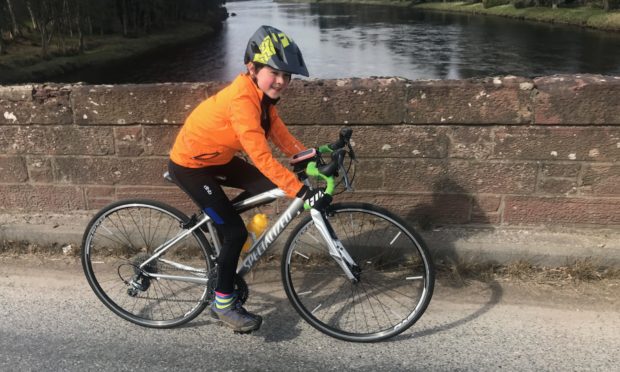I was out cycling with my son a few days ago. While much of my exercise has been indoors, I have been trying to get outside with kids for an hour or so of activity and for us that means out on our bikes.
We are fortunate in Courier Country to have access to some amazing routes right on our doorstep. There is no need to travel far to experience new and interesting sights. And so it was that my son asked: “What are those houses over there?”
We were looking across the River Tay, about one mile as the crow flies from our house. I told him that it was the village where we lived and he looked at me as if I was mad. We had taken a circuitous route from our house to get to the other side of the river and were now on a small, deserted road that, until this moment, he hadn’t known existed, despite looking across to the ridge it was on almost every day.
We are not the only ones. Scanning through my social media feeds, it is clear many of my friends are having similar adventures very close to home. People are discovering tracks, trails and routes they have never been on before as they aim to stay close to home to take any form of outdoor exercise. People have been discovering old disused railway lines and tunnels, rideable tracks through woodland, quite literally behind their back garden and venturing onto roads they would normally drive to get somewhere more interesting.
One of the aspects I love about cycling is that it offers a new perspective on familiar territory – a way of looking and listening to our world differently. From the slightly higher vantage point, sitting up on a saddle rather than slouched lower in a car seat, to the slower, more relaxed journey through environments, cycling allows us to see our surroundings in new ways.
Even the contours become new. On one ride I told my daughter to get ready for the approaching hill. “What hill?” she asked. She was adamant there was no hill ahead – that was until she quickly started changing down gears. Sheepishly she told me to forget that she had never noticed a hill there before.
The problem was that, despite travelling that road from our house most days for much of her life, she had only ever done so in a car where the gradients seem inconsequential. Now the effort of pedalling presented a whole new perspective to her immediate environment.
There have been many articles I have read online recently predicting what life-after-lockdown might look like and presenting arguments that the world will be very different when we emerge, quite possibly better as we realise that much of our activity has been unnecessary.
Do we need to jump in a car every day to travel to an office, when many of us can conduct aspects of our work from home.
Similarly, do we need to rack our bike up onto the roof of a car and then drive somewhere to cycle, when a world of routes and exploration awaits us on our doorstep.
It is human nature to always want to push our boundaries further afield, but as we do so let us remember to not neglect what we have right in front of us.
Please adhere to government guidelines in all outdoor activities.
Cycling miscellany
The Cyclists’ War Memorial
The Cyclists’ War Memorial is a 30ft high war memorial on the village green in Meriden, West Midlands, built in 1920 to commemorate cyclists killed in the First World War. It is believed that the first British soldier killed in the war was Private John Parr, a reconnaissance cyclist with the 4th Battalion, Middlesex Regiment).
A bronze plaque was added in 1963 to commemorate cyclists killed in the Second World War.










